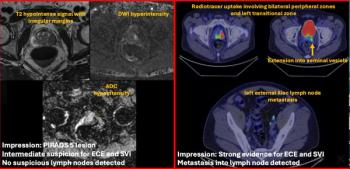
PDAs expedite delivery of urgent exam results
A scheme that captures wet reads at PACS workstations and then uses personal digital assistants to notify emergency physicians that they are ready promises to get urgent radiology exam reports back to referring physicians without delay, according to researchers at the University of California, San Francisco.
A scheme that captures wet reads at PACS workstations and then uses personal digital assistants to notify emergency physicians that they are ready promises to get urgent radiology exam reports back to referring physicians without delay, according to researchers at the University of California, San Francisco.
Using the system, a radiologist enters wet reads from the PACS display station via an embedded Web form. Once entered, the wet reads are sent to a Java message service provider, which distributes them to various clients connected to the service. One of these clients is a PDA-based Java application that runs on networked PDAs carried by emergency physicians. The application is used to notify these physicians when a wet read is available (J Digit Imaging 2005 Aug 16;[Epub ahead of print]).
Newsletter
Stay at the forefront of radiology with the Diagnostic Imaging newsletter, delivering the latest news, clinical insights, and imaging advancements for today’s radiologists.




























